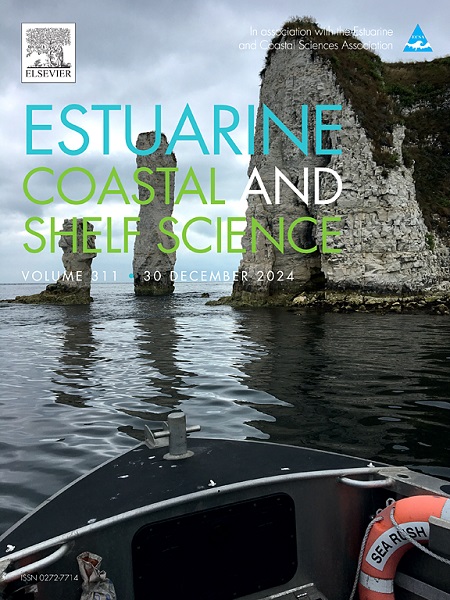Blue Carbon at the southern tip of Africa: current knowledge and future perspectives for dynamic estuarine environments
IF 2.6
3区 地球科学
Q1 MARINE & FRESHWATER BIOLOGY
引用次数: 0
Abstract
Blue Carbon Ecosystems (BCEs), specifically salt marsh, seagrass, mangroves, occur in South Africa's relatively small, sheltered estuaries that are often disconnected from the ocean. These are dynamic environments where shifts between BCEs and other habitats along ecotones occur in response to mouth changes, floods and droughts, as well as anthropogenic pressures. Although Blue Carbon is becoming well established in South Africa, critical knowledge gaps remain; these are summarised under seven themes and future research and management actions identified. A holistic approach is recommended for Blue Carbon studies in estuaries to measure across elevation gradients (rather than focusing on individual vegetation types) and to include reeds, sedges and forested wetlands. Additionally, quantifying data deficient carbon stocks and processes, modelling future climate change impacts, instilling a sustainable long-term monitoring program, incorporating relevant emerging blue carbon stocks, realizing nationally inclusive restoration and protection co-management plans, and aligning local approaches with global frameworks of reporting are advocated as future recommendations with respect to South African BCEs. South Africa has high biodiversity and unique pressures influencing BCEs and is well positioned to inform the global research agenda. While the limited spatial extent of BCEs restricts the feasibility of carbon credit opportunities, high biodiversity values of these ecosystems hold potential under emerging ‘nature credit’ frameworks.
非洲南端的蓝碳:动态河口环境的当前知识和未来展望
蓝碳生态系统(bce),特别是盐沼、海草、红树林,出现在南非相对较小的、受保护的河口,这些河口通常与海洋隔绝。这些是动态的环境,在这些环境中,bce和其他沿过渡带的栖息地之间发生变化,以响应河口变化、洪水和干旱以及人为压力。尽管“蓝碳”在南非已经建立起来,但关键的知识差距仍然存在;这些总结为七个主题,并确定了未来的研究和管理行动。对于河口的蓝碳研究,建议采用一种整体方法来测量海拔梯度(而不是专注于单个植被类型),并包括芦苇、芦苇和森林湿地。此外,对数据不足的碳储量和过程进行量化,对未来气候变化影响进行建模,逐步建立可持续的长期监测计划,纳入相关的新兴蓝碳储量,实现全国包容性的恢复和保护共同管理计划,并将地方方法与全球报告框架结合起来,这些都是南非BCEs未来的建议。南非具有高度的生物多样性和影响生物多样性的独特压力,并且处于为全球研究议程提供信息的有利位置。虽然生物生态系统有限的空间范围限制了碳信用机会的可行性,但这些生态系统的高生物多样性价值在新兴的“自然信用”框架下具有潜力。
本文章由计算机程序翻译,如有差异,请以英文原文为准。
求助全文
约1分钟内获得全文
求助全文
来源期刊
CiteScore
5.60
自引率
7.10%
发文量
374
审稿时长
9 months
期刊介绍:
Estuarine, Coastal and Shelf Science is an international multidisciplinary journal devoted to the analysis of saline water phenomena ranging from the outer edge of the continental shelf to the upper limits of the tidal zone. The journal provides a unique forum, unifying the multidisciplinary approaches to the study of the oceanography of estuaries, coastal zones, and continental shelf seas. It features original research papers, review papers and short communications treating such disciplines as zoology, botany, geology, sedimentology, physical oceanography.

 求助内容:
求助内容: 应助结果提醒方式:
应助结果提醒方式:


